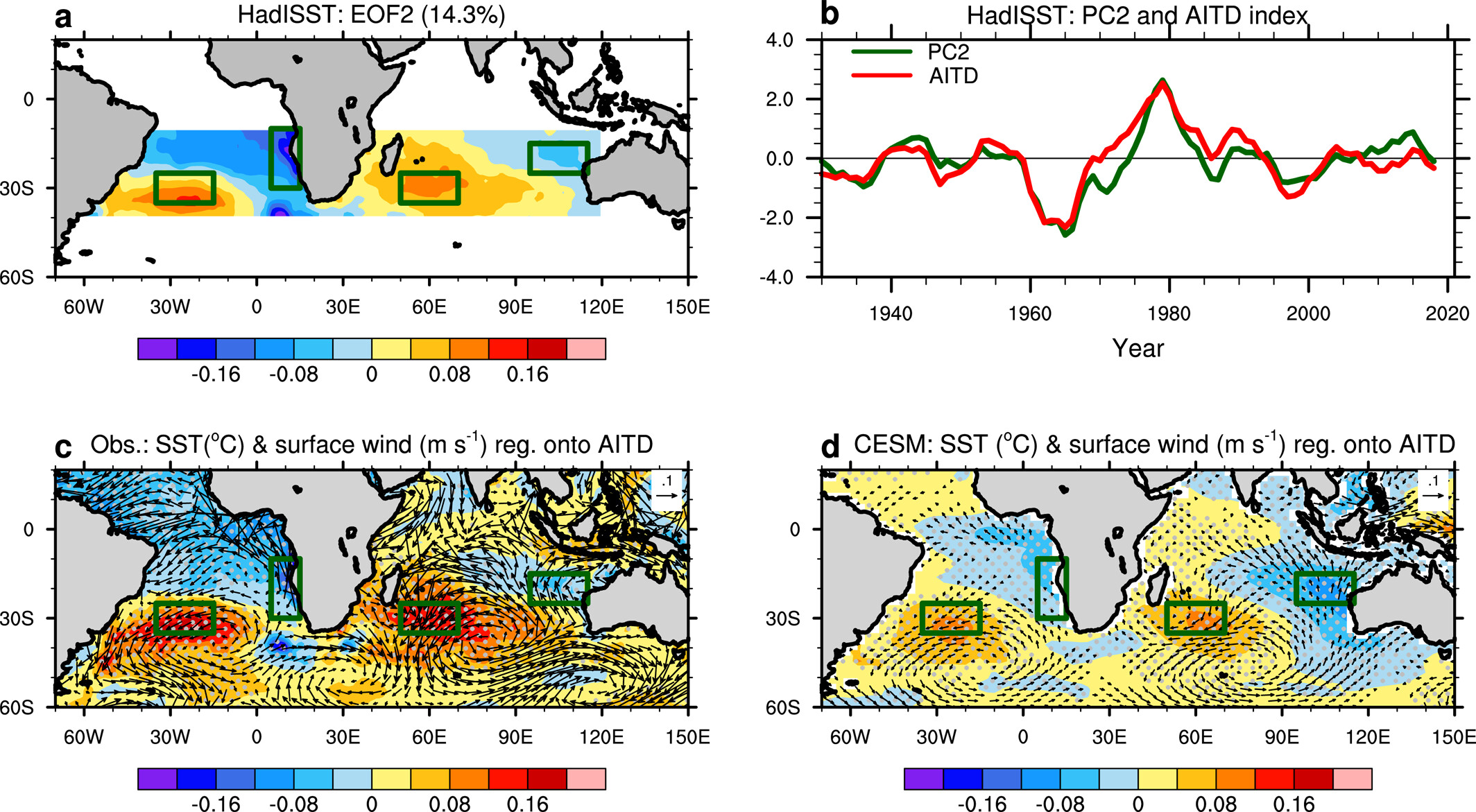Xing Gao, Yuanlong Li, Pengfei Lin, Lei Zhang, Ying Lu, Qiuping Ren, Fan Wang, Huizan Wang, Xiaoqian Zhu
Published in Geophysical Research Letters, June 2025
Analysis of sea surface temperature (SST) data robustly detects dipole-pattern decadal anomalies in the southern Atlantic and Indian Oceans (SAIOs) that co-occur like twins, termed the Atlantic-Indian Twin Dipoles (AITDs). The mechanisms governing the AITDs are investigated based on observational data sets, climate model simulations, and ocean model experiments. We show that the AITDs are coupled with alterations in subtropical highs that involve a variety of regional air-sea processes. Specifically, while cloud-controlled radiative heating plays key role in the Atlantic, wind-driven turbulent heat flux change is essential in the Indian Ocean. Wind-driven ocean dynamics are also important near the eastern boundaries of the SAIOs. Interdecadal Pacific Oscillation and Southern Annular Mode are conducive to the AITDs by modulating the subtropical highs. Our results highlight the trans-basin linkage between the SAIOs, providing implications for predicting the Southern Hemisphere climate and regional extremes.

(a) The EOF2 of the decadal SST anomaly in the SAIOs within the 10°–40°S band. The explained variance is 14.3%. (b) The normalized principal component of the EOF2 (PC2; green line) and the AITD index (red line). (c) SST anomalies (unit: °C; shading) regressed onto the AITD index. Results are derived from HadISST. Surface wind (unit: m s−1; vectors) anomalies regressed onto the AITD index with the leading time of 0–6 years (AITD lags) are derived from JRA55. Stippling and vectors indicates significant values at 95% confidence level based on the Student's t test. (d) Same as (c), but derived from the CESM-LE. Rectangles in (a, c, and d) denote regions of SWAO (25°–35°S, 30°–10°W), SEAO (10°–30°S, 5°–15°E), SWIO (25°–35°S, 50°–70°E), and SEIO (15°–25°S, 95°–115°E).
Gao, X., Li, Y., Lin, P., Zhang, L., Lu, Y., Ren, Q., et al. (2025). The decadal Twin Dipoles in the Southern Atlantic and Indian Oceans. Geophysical Research Letters, 52, e2025GL115115. https://doi.org/10.1029/2025GL115115